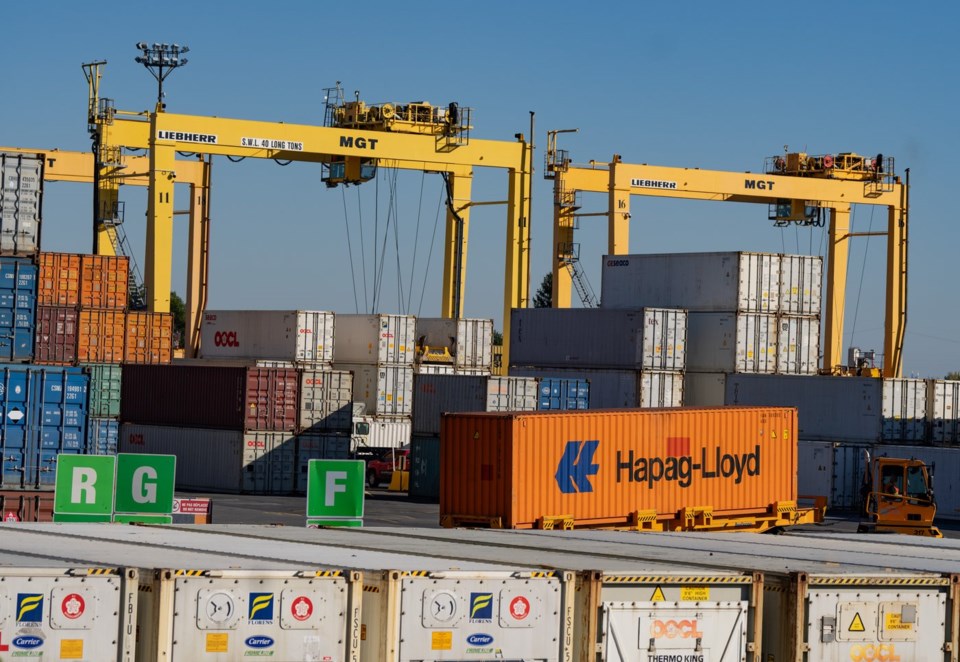OTTAWA — Canada's border guards have recovered more stolen vehicles at railyards and ports so far this year than in all of 2023.
Transport Minister Anita Anand said Wednesday that the Canada Border Services Agency has recovered 1,945 stolen vehicles, with the majority found in Quebec.
The federal government launched an action plan earlier this year to address the record rates of vehicle thefts involving local and international police agencies, vehicle manufacturers and other partners.
"We are here today to say that this is working, that we are seeing a 19 per cent decrease in auto theft during the first half of 2024 compared to last year," Anand said at a press conference outside Halton Regional Police Service headquarters in Oakville, Ont.
"We are seeing the CBSA seize 1,900-plus vehicles, and we are making sure we ourselves as a federal government are being held accountable."
Anand was referencing statistics released earlier this month by the Insurance Bureau of Canada that show more than 4,000 fewer vehicles were stolen in the first six months of 2024, compared to the same period a year ago, though the bureau cautioned that the numbers are still more than twice what they were 10 years ago.
Anand added that she expects to introduce new regulations for vehicle manufacturers about the need for anti-theft technology in new vehicles next year but wouldn't provide a specific timeline.
She said the consultation on those potential regulations is complete, and she is waiting for officials to bring forward proposed changes.
The anti-theft regulations would only apply to new vehicles. To deter theft, Ontario Liberal MP Adam van Koeverden suggested drivers park inside if possible and use a steering wheel club, a common anti-theft device.
Much of the auto theft problem is centred in Ontario and Quebec, with stolen vehicles being routed through the Port of Montreal and then shipped overseas.
According to insurance crime watchdog Équité Association, 28,550 vehicles were stolen in Canada in the first half of 2024. The watchdog's finding pointed to a 17 per cent decrease in thefts from the year prior.
"That's by no means suggesting the problem's over, it's far from over," said Équité Association investigative service vice-president Bryan Gast
"The numbers are way too high, but it's some good positive feedback as to some of the efforts on the enforcement side are taking hold."
Until the proposed regulations for vehicle manufacturers are put in place, Gast said only reactionary parts of the action plan, such as improving police intelligence-sharing, can be implemented.
While Anand stressed the regulations would focus on newly built vehicles, Gast suggested that it could be possible to push some improvements to anti-theft technology through software updates on newer-model vehicles.
The last time regulations on anti-theft measures were updated in Canada was 2007, with the requirement for immobilizers. After that, vehicle theft rates declined by 50 per cent and held relatively steady until they began to increase again in 2021.
Gast said the modern methods of stealing vehicles, such as remote reprogramming of key fobs, did not exist back then or were in the very early stages.
"The new standards really have to be modernized to reflect the manner in which vehicles are being stolen and the current vulnerabilities of those vehicles," he said.
This report by The Canadian Press was first published Oct. 16, 2024.
David Baxter, The Canadian Press



